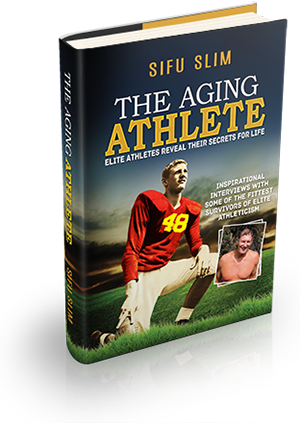The Aging Athlete
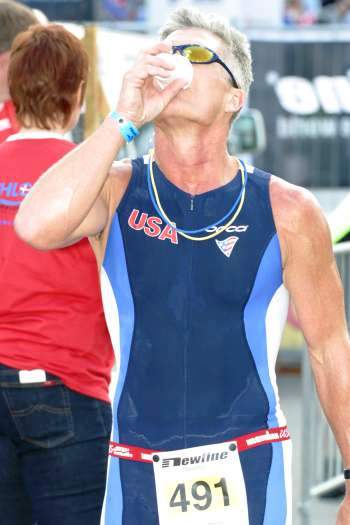
Competitive triathlete Mac McCluskey
The book of engaging first-hand interviews with athletes whose intention was to never stop pursuing fitness.
Hear the stories of the athletes in their own words …
• A surfer who changed course and became a Brazilian Jiu-Jitsu champion
• A top 1960s and ’70s American football player who now ‘recreates’ in the weight room
• The ‘World’s most Dangerous Man’ who formed a ministry but still likes to participate in cage fighting
• A determined triathlete from a coal-miner town whose family’s motto is “We don’t quit”
• A visionary who has been called the most famous living Native American — a gold medalist from the 1964 Tokyo Olympics who travels spreading his message about 300 days per year
• The tall white Texan who was called upon to break the color barrier … in reverse
• The USC fullback who helped usher in acceptance of black collegiate athletes in the Deep South
• The ‘Black Prince’ of the Arnold era of bodybuilding whose mother, Lucille, ran a juke joint in Georgia.
• An 88-year-old who has been more fit as a triathlete in his 80s than he was on his ship in World War II
USA blue jersey (photo above), age 50s competitive triathlete Mac McCluskey. (Below) Mac McCluskey (glasses), his older brother (50) who he says, “Used to kick my butt,” and his cousin (33) in Pittsburgh, Pennsylvania in the year 1970.
Mac says, “My older brother was always better at things than me. Ok, he was better at everything. No matter how hard I tried, it was impossible for me to compete with him. He was better at school, better at sports, better with the girls, he was taller, he was stronger, and I was forever John’s little brother. I had some difficulty finding my place.”
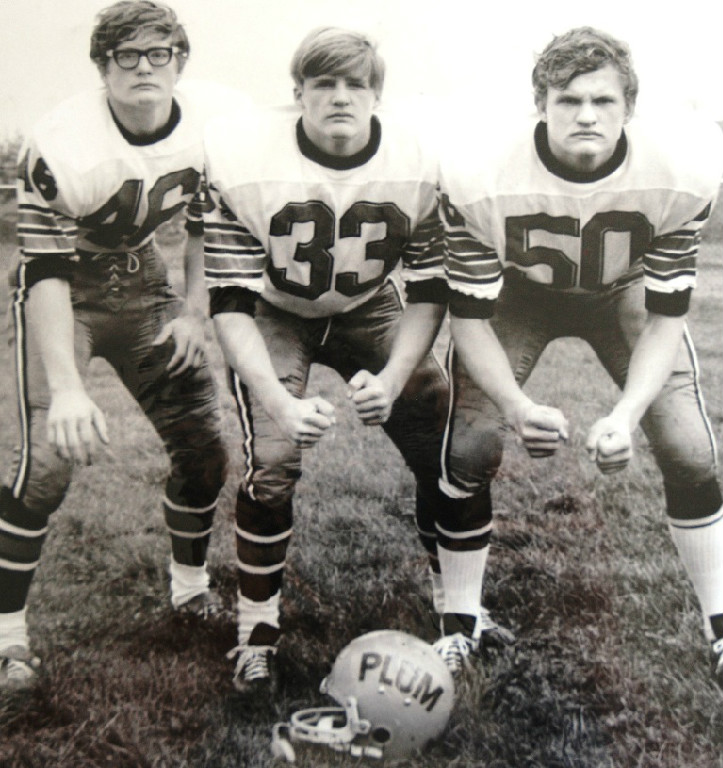
Mac McCluskey (in glasses)
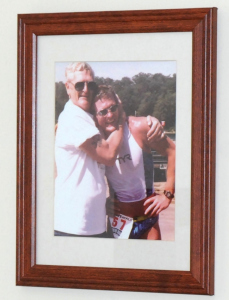
“It was many years later after I had long since left home, and found endurance sports, that my father came to me, after a long triathlon, and told me how proud he was, that someone in his family, his son, could accomplish such a thing. At that moment I thought, how awesome, I’m finally better at something than my brother! I had finally found my place, I was the family endurance athlete. For several reasons this was the happiest moment of my athletic career. By sheer coincidence my Mum was able to capture the moment in a photograph. That photo has hung in my home since that day. Often times I wonder if that is the very reason I keep pushing to longer distances, and harder challenges. I am the family endurance athlete.”
Why I wrote the book
“Sifu, you should write a book called The Aging Athlete. It’s a new field of study in orthopedics.” Dr. Bill Gallivan, 4th-generation orthopedic surgeon, former college rugby player and current martial artist, and father of 4.
My quest began with a question to a very large aging athlete. This exceptionally fit offensive and defensive lineman from Gary, Indiana was the 4th pick in the 1966 NFL draft. “When you go to the reunions with the retired players from your era, how many of them are still in shape?”
“Less than 10 percent.” Randy Beisler, then age 64, after a workout in Northern California, 2009
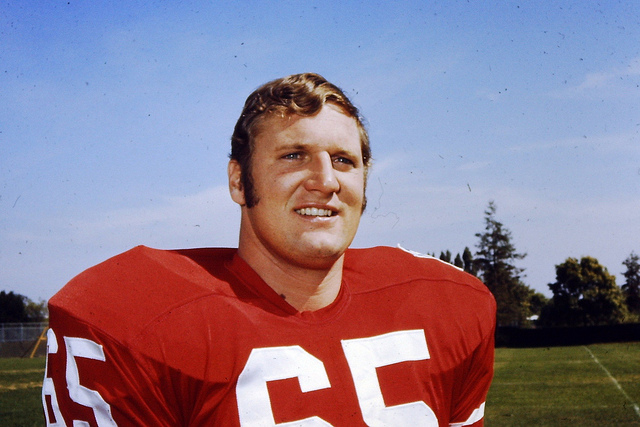
Randy Beisler back in the 1960’s
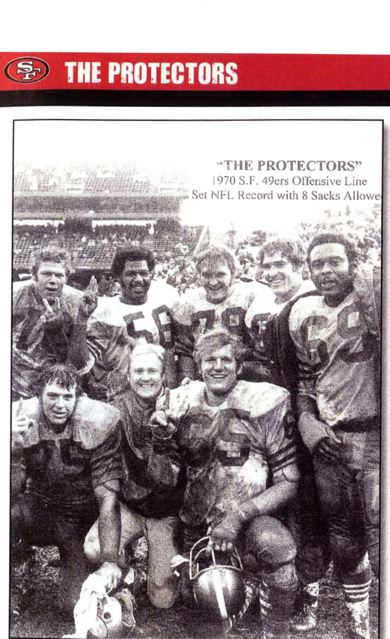
Randy Beisler, no. 65, with his line that broke the NFL No-Sacks record in 1970. Guess how many of the others in the photo are still fit?
Yes, there are orthopedic problems and brain-trauma problems that affect a number of aging athletes, but the interviews with still-fit athletes from ages 40 to 100 reveal experiences of inspiration and motivation–AND HABIT–that take over when the days of drill-sergeant coaches leave off.
Why do most turn to sedentary lifestyles–like pizza, beer, and TV or becoming business workaholics–while others continue to work physical activity into their aging years?
Click here to get The Aging Athlete book on Amazon
The Title
Some may think the title a bit off-putting. The topic is relevant and we are all aging. This is not a rebuff toward all of us who are gaining in years but rather a praise of the lengthiest part of life and living. If youth is wasted on the young, what do adults get? They get about 6 to 8 decades to sort things out–and even thrive!
A trip to the DMV, two years before turning 50, had me putting down ‘gray’ under hair color for the driver’s license renewal. They didn’t have a category called ‘graying.’ I’ve embraced the aging process and am happy most of the time. (Being young, and having to take college final exams over again and dealing with plenty of pressure and nonsense, doesn’t seem like a thrill at this point.) A biochemical and spiritual high greets me most every day due to a daily outdoor fitness program. It’s invigorating and it sets up some of the best sleep imaginable.
Aging isn’t always easy. Despite daily fitness, healthful diet and rest, there is a tendency for the body to take more time to heal properly as we age. Years of sitting have taken their toll. Wouldn’t it be better for all of us to learn about aging–and embrace it and adapt–than to deny it and fear it?
The Most Famous Aging Athlete
He may have given all he had physically–including abusing his body–hasn’t kept fit, but still has done a bundle since losing portions of his physical and mental wellness. Of his condition, he has said he doesn’t feel sorry for himself and doesn’t want others to feel sorry for him either.
Quotes from his younger days:
“It isn’t the mountains ahead to climb that wear you out; it’s the pebble in your shoe.”
“I know where I’m going and I know the truth, and I don’t have to be what you want me to be. I’m free to be what I want.”
“It’s lack of faith that makes people afraid of meeting challenges, and I believed in myself.”
Muhammad Ali, The Greatest
Read the book to learn why
Ninety percent of retired athletes and ex military folks are no longer working on keeping in shape. Did they once give all they had and now have nothing left? Why do you think they stopped? Are they like the rest of us — tuning in to sports and ‘Dancing with the Stars’ so they in turn feel as though they actually were physically and emotionally involved. See MIRROR NEURONS for more on this.
Athletes who have been interviewed during the research for this book
‘The World’s Most Dangerous Man’
Ken Shamrock, former UFC heavyweight champion. Born in 1964. Originally from Macon, Georgia and Napa Valley, California. Now lives in Reno and runs Lion’s Den Ministries.
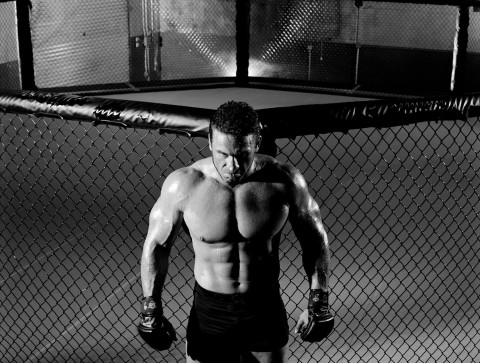
Here’s a video of Ken Shamrock discussing the book project.
The man who broke the color barrier … in reverse.
Here is the man Meadowlark Lemon, the Clown Prince of Basketball, brought in to his all-black comedic basketball team in the early 1980s. Allen Winder, 6’9, 250 pounds, born in 1957 in Texas City, Texas. Allen is a retired professional basketball player, former corporate executive and current Director of Operations for Meadowlark Lemon Ministries.
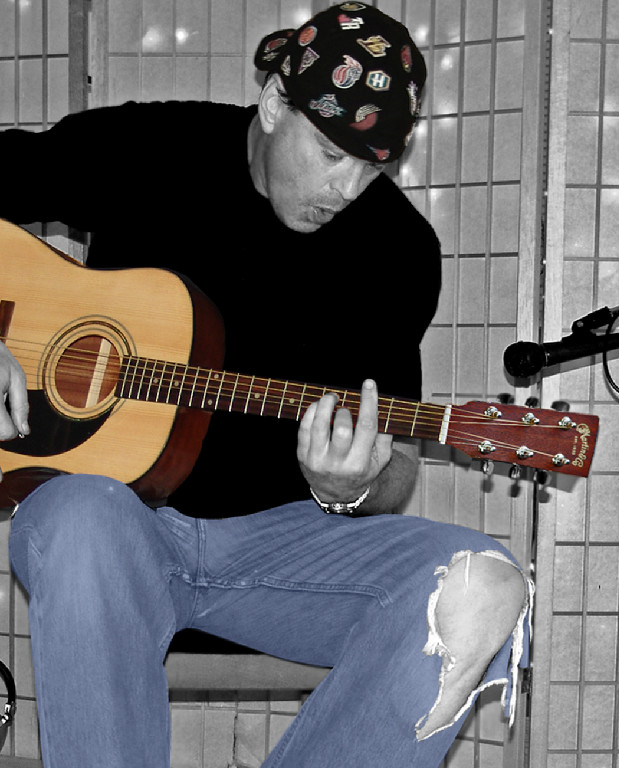
Allen gets down to strum and sing — one of his favorite forms of recreation and decompressing.
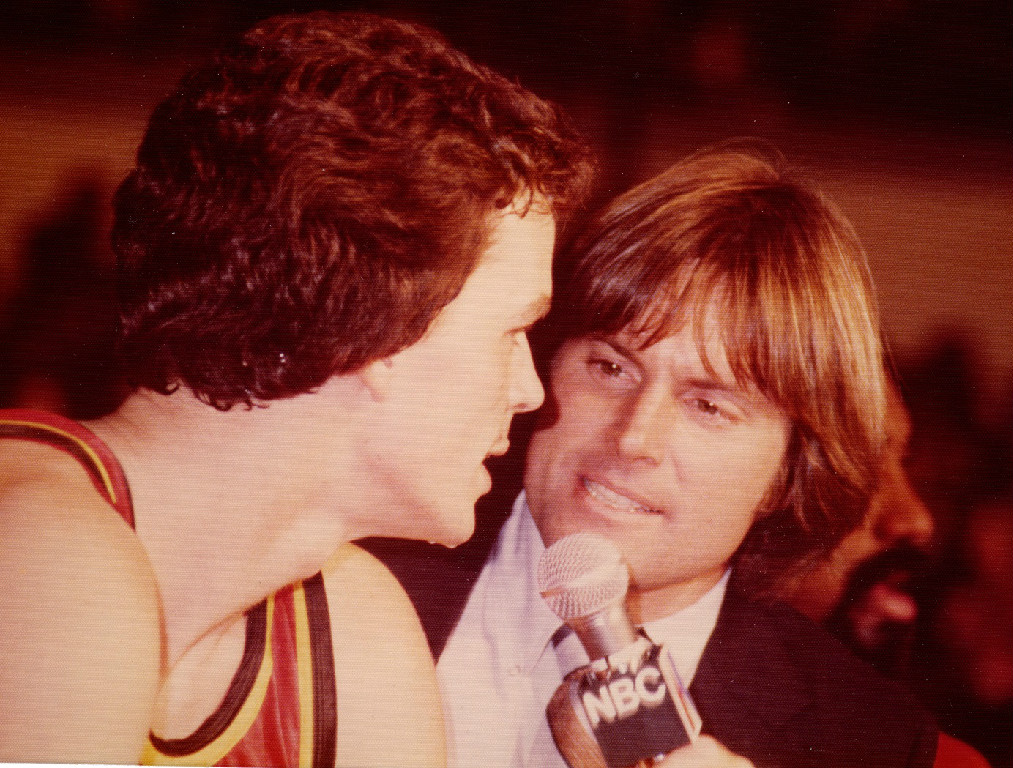
Allen and Bruce Jenner, 1976 Decathlon Olympic Champion, shown during an entertaining 1980 game with Meadowlark Lemon’s Bucketeers.
Allen weighs in on the notion of becoming a motivated yet sometimes ailing aging athlete.
“Maintaining a very rigorous and disciplined exercise schedule up until I was 46, then being hit with Freiberg’s Disease and nerve damage in my feet really put a damper on that aspect of my very active life. I am a very positive guy by nature, but it still bums me out that I can’t run, cut or play hoops with my son. We had him and my daughter in my forties and I was always highly motivated by thinking about one-on-one matches with them on up into my eighties! And now, adding insult to injury, my son, Christian, beats me at H-O-R-S-E! Geez! 😉 ”
Billy Mills, 1964 10,000 meter Gold Medalist at Tokyo Olympics.
Billy Mills wins the 10,000 meters in Tokyo with one of the greatest individual upsets in Olympic history
It could be said that at the time of this book’s publication, Billy is “the most famous living Native American on the planet.”
He certainly put in the miles on the paths and tracks to win races; now he puts on flight miles and automobile miles to get to where his message and wisdom are needed.
Born June 30, 1938, Pine Ridge Indian Reservation, South Dakota. Native American Runner, Author, and Public Speaker. Oglala Lakota Tribal given name: Makata Taka Hela which means “Respects The Earth,”
Mac McCluskey, ‘Mr. Endurance’
Mac McCluskey’s resume includes Arizona State University Football, Semi-Pro Football, a fateful car ride with Jack LaLanne, the early days of triathlons and later IronMan competitions, coaching high school athletes and martial arts, and over 50 years of competitive sports. Mac runs MonkeyRaces.com from his home in Park City, Utah. In the book–The Aging Athlete–Mac goes deep as he recalls the high and low points of his life. The take-away: Have patience, never give up, and always do your best! See www.coachmac.net/blog.htm
Surfing is what he loves, Brazilian Jiu-Jitsu is what he has mastered
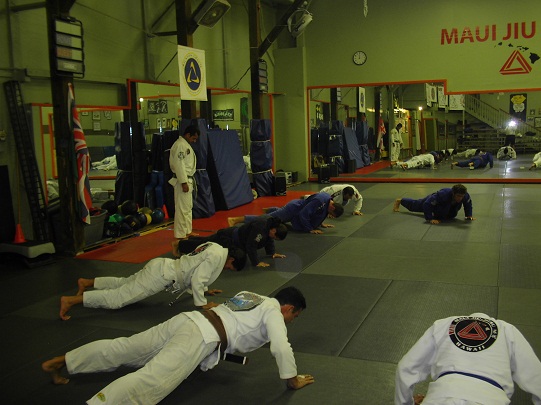
Luis “Limao” Heredia, standing as his students do push-ups.
Luis got into jiu-jitsu in Rio de Janeiro Brazil when he found that his first hope–being a pro surfer–wound up not being his professional calling. At age 14, he began training in Brazilian jiu-jitsu and eventually settled in a school founded by the famous Gracie family. Now, more than 3 decades–and 5 Pan American Championships–later, he’s still at it. From his large jiu-jitsu training center near the big waves on the north shore of Maui, he says, “It’s about the love, the sweat, bonding with people of all backgrounds. In my gym, you might even find a reforming criminal grappling with a police officer. In here, we’re all brothers and sisters in the aloha spirit.” mauijiujitsuacademy.com
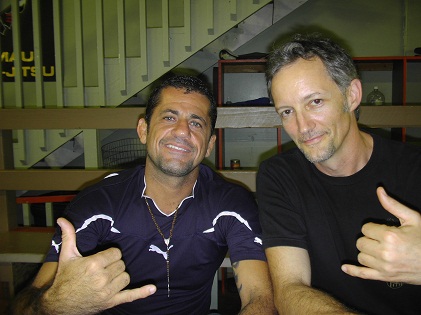
Luis granted me an interview despite his busy schedule of teaching classes, doing daily classes with his own personal trainer and sparring in jiu-jitsu in preparation for the 2011 Pan American Games.
“Thanks for the great questions, Sifu,” Luis told me. “It’s important, what you are doing… people can benefit when they understand the mindset of experienced, aging athletes.”
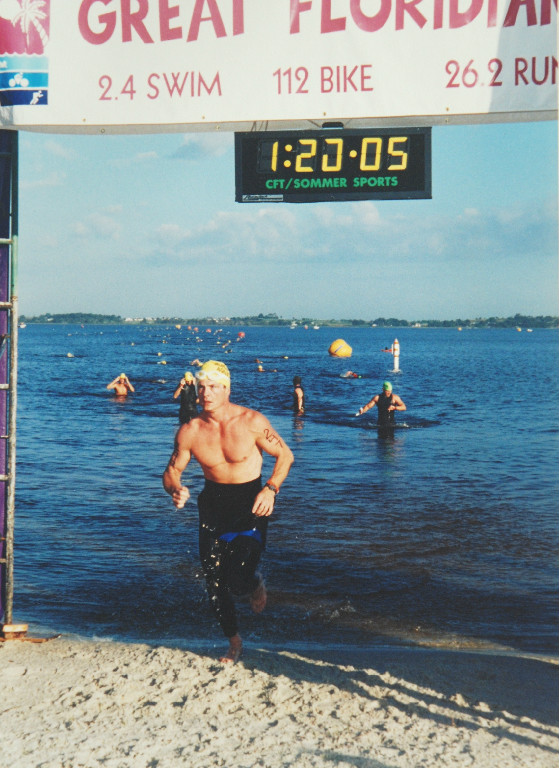
This is part of what Coach Mac has been up to since leaving competitive football. He still trains and he still competes.
Henry K. Meehan, age 50s, retired U.S. Marine, DEA Agent, and current Champion in Police and Fire Olympics. The only performance-enhancing substances he uses are an XL coffee and an iron will.
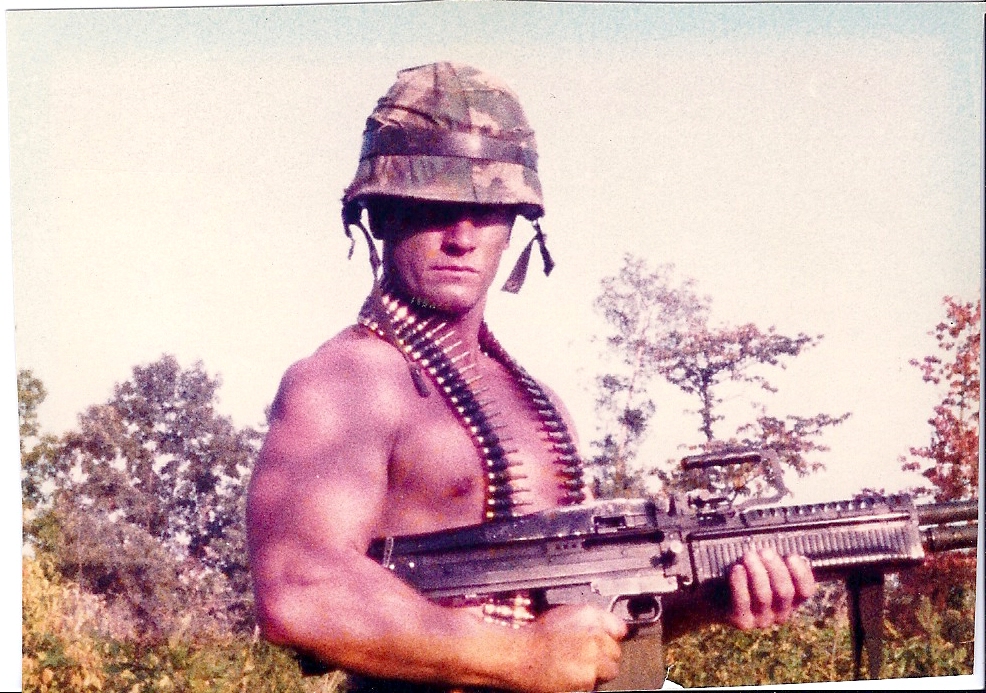
Photo age 23. Henry has a noticeably stern voice.
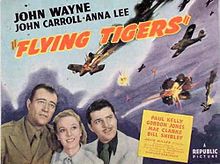
After knowing him for several decades, I finally asked him about his voice. “When I was 14,” he told me, “I watched John Wayne in ‘Flying Tigers’ [Wayne’s first war film–1942]. I practiced his voice, converted it into my own style, and have been using it 100 percent of the time ever since.” Henry confesses that acting ability and an occasional ruse “… Have saved my butt more than once.”
Jason Jewell, intellectual, lifelong student, and squash master says, “I have stopped training several times due to work responsibilities. Because of my build and because of my long history on the squash court, my body has always bounced back. I believe there is something to the concept of muscle memory.”
Jason Jewell–new father, full-time analyst with a pro squash background–puts the philosophical spin on why some athletes hang it up and do little or no fitness starting the day they retire.
Jason Jewell offers a testimonial for the interview process for this book.
What about regular folks?
Can we do regular things as we age?
Is practicing Brazilian Jiu-Jitsu at age 50 a regular thing to do?
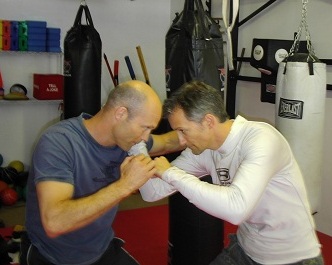
By skill level, my friend Steve and I (that’s me, the author, the slim dude on the right) are not world-class black belts. We’re busy entrepreneurs and we both spend lots of time sitting on our butts–working with computers and phones. As aging Brazilian Jiu-Jitsu blue belts, we train fitness and technique and attempt to dismiss some of the aging process.
Once considered a young man’s game, jiu-jitsu–known as ‘the gentle art’–has become a lifetime sport for many participants. I won’t offer this advice for everyone, but I’ve experienced as many injuries from the one-sided/one-directional, non-contact sport of golf (once my best sport and a sport I still revere) as I have from jiu-jitsu which works the entire body and is known to increase core strength, endurance, power, and flexibility. Tiger Woods has had a handful of knee operations. I know senior martial artists who have never gone under the knife (though plenty have). Like tennis and baseball, golf is a whacking sport. Jiu-jitsu is known as the gentle art and, when done artfully, has more omnidirectional flow.
Over the years, athletes have learned from personal practice and sports medicine what works and what doesn’t. What I call 1970’s linebacker workouts–heavy weights, often using restrictive machines, daily hardcore training, insufficient downtime overall–has been replaced by new techniques. Programs such as Functional Training, Egoscue Exercises, Plyometrics, Science-Based Intense Training, and biomechanically-efficient movement are the current rage. Athletes are also using cold baths, sports massage, prolotherapy, aromatherapy, hydrotherapy, and other therapeutic and healing techniques.
Why are so many former athletes and former military personnel stopping their training and not taking up lifetime, recreational physical activity?
One possibility has to do them not being able to handle being in the driver’s seat after having spent so many years listening to their drivers–their coaches and drill sergeants–and have mostly been trained to be passengers. Yes, many have been trained to lead while on the playing field. But, what about life once outside of the pivotal competitions and supervised training drills? What about life as an ordinary person with an extraordinary past?
Here’s a video about being in the driver’s seat vs. the passenger’s seat.
By showing this video, I’m not advocating a cancer therapy based on killing our cells and potentially causing further harm, including more cancer. The goal is simply to share this person’s philosophy about decision making.
Resentment
One reader suggested, “People resent being told what to do, especially when it comes to exercise. Adults are preoccupied with life responsibilities. They don’t want to be told to run and lift weights when they’re already overburdened.”
Retired military folks and athletes welcome a little peace when they hang up their uniforms. But does that mean they should hang up their bodies?
What about performance-enhancing substances?
Are athletes and military personnel asked to do too much in terms of regular physical performance?
Is that pushing them to ‘cheat,’ to cut corners, and to play when excessively fatigued or injured?
Here’s an excerpt from Hal Bernton’s November 2010 article in the Seattle Times.
“To prepare for — and perform — on combat tours of duty, some soldiers told investigators they turned to steroids to boost their brawn… Several soldiers from the 4/23 Battalion, who confessed to using steroids, estimated that more than half the unit of some 700 soldiers had sampled steroids, according to investigative documents obtained by The Seattle Times under the federal Freedom of Information Act. One soldier had a scheme for continuing steroid use in Afghanistan through the receipt of mail-order packages that would disguise the drugs in lotion packets.”
<http://seattletimes.nwsource.com/html/localnews/2013478445_steroids21m.html>
When traveling to Boston in the mid-2000s, I had the chance to speak to an elite member of the military who had trained soldiers for several years.
He told me that in boot camp, it would be very difficult to conceal anything, “next to impossible” was how he put it. Though, I reminded him that drugs have a long history of making their way into our penitentiaries.
“The recruits go through boot camp, which is hell,” he explained. “Then we put them through very challenging mental and physical training. The competition is fierce, the days are long. As a soldier you want to perform well, plus you don’t want to let your team down. Then, the book learning in the afternoon… again, it’s a long day. Steroids and other drugs are easy to obtain and, since so many eventually live off base, they’re easy to store and take. And, drugs give the soldiers the added edge, more strength, endurance, and lots more sustained focus and energy. I’ve seen it in action.”
Have the substance users abused their bodies beyond repair? Have they pushed too far for a lifetime of steady wellness?
While driving his truck, Big J., a longtime fitness trainer, talks to the camera and weighs in on the subject of steroids and growth hormones, as well as the notion of training naturally and using the body’s self-made hormones. He suggests that with intense training and with proper diet and supplementation, you can do just fine.
“Train with intensity. That raises those levels of testosterone and growth hormones, that way you don’t have to use drugs.”
His background (he lists on the Net): ISSA Certified for 15 years. Ed. in Kin./Phys. 18 Yrs Gym owner/P.T of Big J’s Extreme Fitness. 10 Years Military and certified Master Fitness Trainer.
Testimonial from U.S. Military Runner Chase Duarte
“Sifu, it was great meeting you. Thanks for the opportunity to talk, I had fun. I wrote a painful description of my first attempt at the 100-mile distance that I DNF’d in 2003. I eventually was able to prevail. Here is a link to my blog http://trailsofglory.blogspot.com. Good luck with all of your endeavors. Keep in touch.”
Get on the emailing list to stay up on the latest from TheAgingAthlete.com
and be sure to check out the first book by Sifu Slim, available at:
SedentaryNation.com
The first wellness book by Sifu Slim
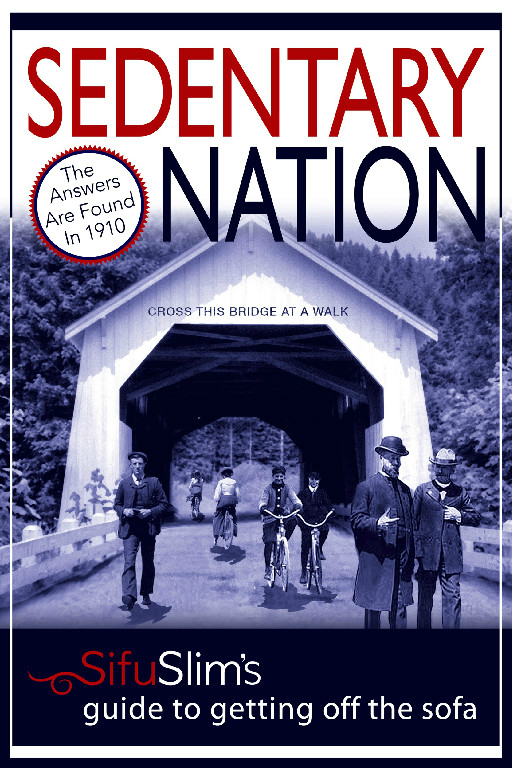
SedentaryNation.com
Click here for the Paperback on Amazon
Click here to get the Amazon Kindle version
In the next edition, read the stories of more athletes, including:
– the the survivor of 5 years in a Turkish prison who hasn’t missed a day of yoga since he began in 1969
– the only original member still touring of The Flying Brothers Karamazov who has been touring for over four decades.
– the father-son triathlon team who created acceptance of disabled teams in sanctioned triathlons
– Bruce Lee’s training partner, close friend, and co-star in Enter The Dragon.
– a firefighter who saved his own life by taking on a very physical job and very physical life
– a new father with a consuming job and world-class squash ability
– the only swimmer, a gold medalist in the 1960 Olympics, to be inducted into both the International Swimmers Hall of Fame and the International Masters Swimmers Hall of Fame
– an elite distance swimmer who strives to keep weight on
– a female sled dog racer
– a female soccer player from the shirtless dream team, a white-haired skateboarder with smooth moves
– a long-board surfer since the 1940s
– a ‘retired’ U.S. Marine whose only performance enhancing supplement is coffee
– a speed golfer who sprints up fairways; a ‘Soviet’ Hockey Player from the Cold War era
– an aging WWII Veteran who moves rock piles just because it’s hard.

